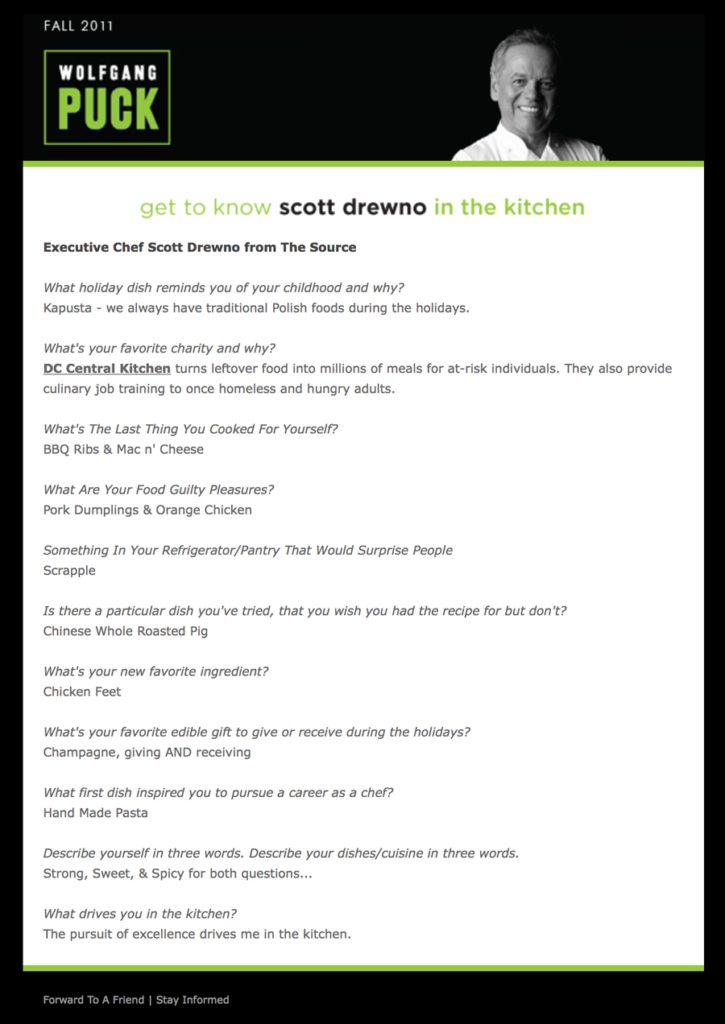There’s an enduring dimension to the David-against-Goliath story that resonates with people.
It brings out a fundamental of good storytelling, the unexpected.
No one expects a David to beat the proverbial Goliath.
The same technique makes for a compelling read in the business world.
That’s why when an accomplished mathematician surfaces to challenge Google, an avalanche of stories appears in media properties ranging from The New York Times to Search Engine Land. In fact, the Computerworld story led with:
“A David has just arose to take on the Goliath that is Google: Wolfram|Alpha, a search engine which serves up formatted answers to questions rather than provide just a list of links.”
One of my favorite writers, Malcolm Gladwell, recently penned a piece for The New Yorker entitled, “How David Beats Goliath.”
As you would expect, Gladwell’s storytelling builds off of a wonderfully contrarian premise:
“David’s victory over Goliath, in the Biblical account, is held to be an anomaly. It was not. Davids win all the time. The political scientist Ivan Arreguín-Toft recently looked at every war fought in the past two hundred years between strong and weak combatants. The Goliaths, he found, won in 71.5 per cent of the cases. That is a remarkable fact. Arreguín-Toft was analyzing conflicts in which one side was at least ten times as powerful—in terms of armed might and population—as its opponent, and even in those lopsided contests the underdog won almost a third of the time.”
But Gladwell doesn’t numb our senses with Arreguín-Toft’s statistics and market research.
He frames the story with a subplot that anyone can relate to: a youth sports team, in this case a 12-year-old girls basketball team coached by the CEO of software company TIBCO, that demonstrates effort and smarts trumping expertise. Think Bad News Bears in pigtails (although it’s tough to visualize TIBCO CEO Vivek Ranadivé playing Morris Buttermaker instead of Walter Matthau).
To provide context on Ranadivé, Gladwell needs to explain TIBCO’s business. Take a look at the TIBCO boilerplate found at the end of each news release:
TIBCO’s technology digitized Wall Street in the ’80s with its event-driven Information Bus software, which helped make real-time business a strategic differentiator in the ’90s. Today, TIBCO’s infrastructure software gives customers the ability to constantly innovate by connecting applications and data in a service-oriented architecture, streamlining activities through business process management, and giving people the information and intelligence tools they need to make faster and smarter decisions, what we call The Power of Now.
Not exactly a narrative that works in a New Yorker story.
Instead, Gladwell inserts Ranadivé’s example again built around something that everyone has experienced, lost luggage from air travel:
“You know, when you get on a plane and your bag doesn’t, they actually know right away that it’s not there. But no one tells you, and a big part of that is that they don’t have all their information in one place. There are passenger systems that know where the passenger is. There are aircraft and maintenance systems that track where the plane is and what kind of shape it’s in. Then, there are baggage systems and ticketing systems and they’re all separate. So you land, you wait at the baggage terminal, and it doesn’t show up.”
Everything bad that happens in that scenario, Ranadivé maintains, happens because of the lag between the event (the luggage doesn’t make it onto the plane) and the response (the airline tells you that your luggage didn’t make the plane). The lag is why you’re angry. The lag is why you had to wait, fruitlessly, at baggage claim. The lag is why you vow never to fly that airline again. Put all the databases together, and there’s no lag.
Sticking with the basketball metaphor, Gladwell dips into the collegiate ranks and comes up with the time a spunky team from Fordham beat the dominant University of Massachusetts led by none other than Dr. J – Julius Erving by transforming the game into 48 minutes of havoc.
But the basketball vignettes are contrasted by the “Davids” through history who chose a conventional path and were promptly squashed: the Peruvians against the Spanish, the Sri Lankans against the British and the list goes on.
The simplicity in language comes out in Gladwell’s punchline:
We tell ourselves that skill is the precious resource and effort is the commodity. It’s the other way around. Effort can trump ability … because relentless effort is in fact something rarer than the ability to engage in some finely tuned act of motor coordination.
Furthermore, what Gladwell calls “the insurgent’s creed” involves not only outworking Goliath, but a second advantage:
They will do what is “socially horrifying.” They will challenge the conventions about how battles are supposed to be fought.
Now there’s a phrase that grabs one by the scruff of the neck, “socially horrifying.”
Back to the big picture.
Gladwell uses the “how” as the vehicle to tell the story of a person, company, army and girls basketball team succeeding when the circumstances suggest it shouldn’t play out this way.
The same principle can be applied to telling a company’s story.
Companies, especially in the technology sector, leapfrog the status quo on a daily basis.
Unfortunately, the typical company wants to jump right to the punch line instead of capturing the “how” in all its storytelling glory.
Those anecdotes, numbers, obstacles, perspectives emotions, derailments, etc. bring out an entertainment value that elevates the accomplishment (even by us mortals who don’t have Mr. Gladwell’s gift).
By the way, Ranadivé’s basketball team made it all the way to the nationals where their slingshots failed them in the third round.






 Along this line, Scott comes across as genuine, perhaps even looking to trigger a reaction on the part of the reader:
Along this line, Scott comes across as genuine, perhaps even looking to trigger a reaction on the part of the reader: